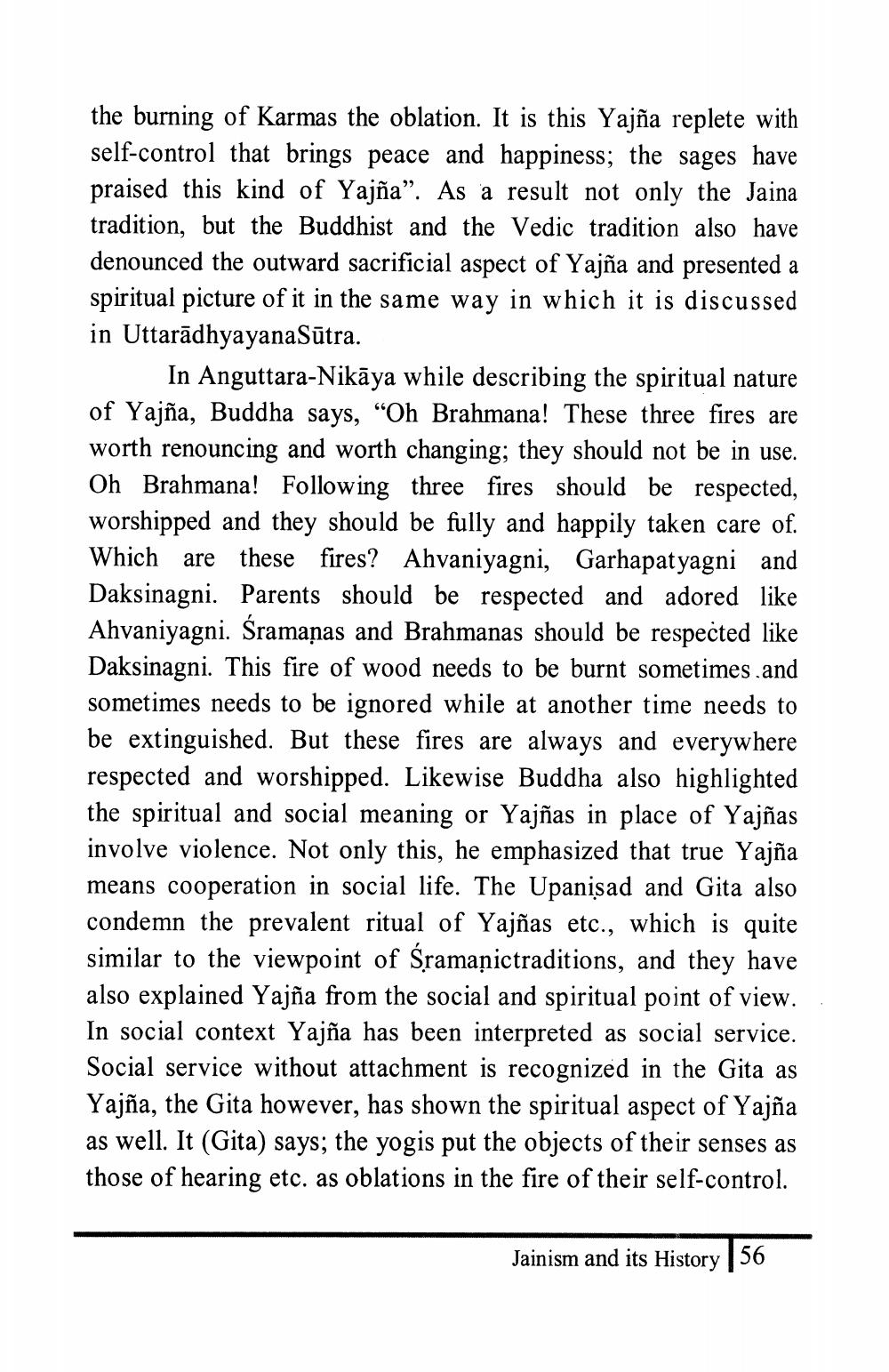________________
the burning of Karmas the oblation. It is this Yajña replete with self-control that brings peace and happiness; the sages have praised this kind of Yajña”. As a result not only the Jaina tradition, but the Buddhist and the Vedic tradition also have denounced the outward sacrificial aspect of Yajña and presented a spiritual picture of it in the same way in which it is discussed in UttarādhyayanaSūtra.
In Anguttara-Nikāya while describing the spiritual nature of Yajña, Buddha says, “Oh Brahmana! These three fires are worth renouncing and worth changing; they should not be in use. Oh Brahmana! Following three fires should be respected, worshipped and they should be fully and happily taken care of. Which are these fires? Ahvaniyagni, Garhapatyagni and Daksinagni. Parents should be respected and adored like Ahvaniyagni. Śramaņas and Brahmanas should be respected like Daksinagni. This fire of wood needs to be burnt sometimes and sometimes needs to be ignored while at another time needs to be extinguished. But these fires are always and everywhere respected and worshipped. Likewise Buddha also highlighted the spiritual and social meaning or Yajñas in place of Yajñas involve violence. Not only this, he emphasized that true Yajña means cooperation in social life. The Upanisad and Gita also condemn the prevalent ritual of Yajñas etc., which is quite similar to the viewpoint of Sramaņictraditions, and they have also explained Yajña from the social and spiritual point of view. In social context Yajña has been interpreted as social service. Social service without attachment is recognized in the Gita as Yajña, the Gita however, has shown the spiritual aspect of Yajña as well. It (Gita) says; the yogis put the objects of their senses as those of hearing etc. as oblations in the fire of their self-control.
Jainism and its History




